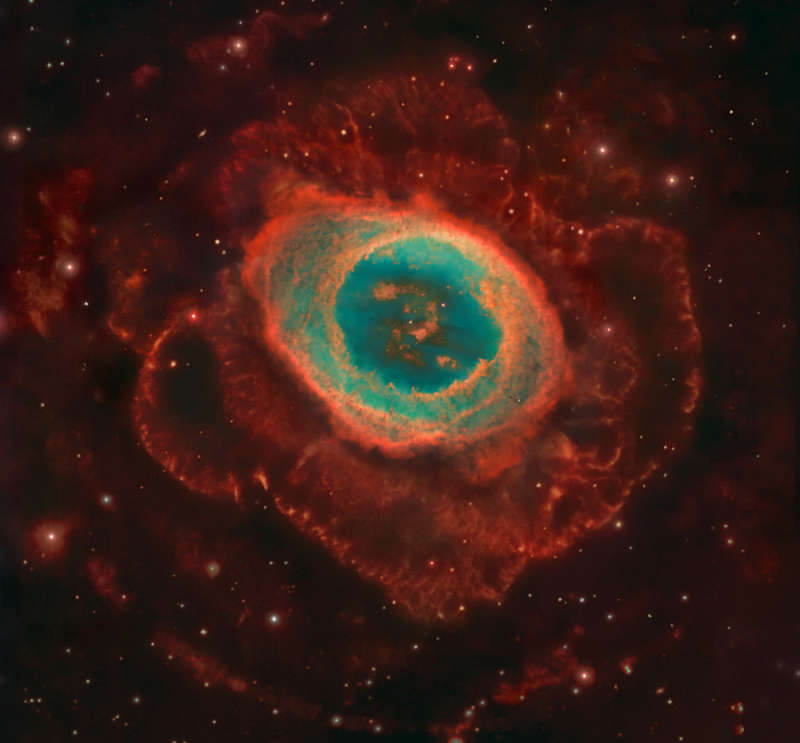Credit & Copyright: Composite Image Data -
Subaru Telescope
(NAOJ),
Hubble Legacy Archive;
Processing and additional imaging - Robert Gendler
Explanation:
Except for the rings
of Saturn,
the Ring
Nebula (M57) is probably the most famous celestial band.
Its classic appearance is understood to be due to perspective -
our view from planet Earth looks down the center of a roughly
barrel-shaped cloud of glowing gas.
But expansive looping structures are seen to extend
far beyond
the Ring Nebula's familiar central regions in
this
intriguing composite of ground based and
Hubble Space Telescope images with narrowband
image data from Subaru.
Of course, in this well-studied example of a
planetary
nebula, the glowing material
does not come from planets.
Instead, the gaseous shroud represents outer layers expelled
from the dying,
once
sun-like star at the nebula's center.
Intense ultraviolet light from the hot central star
ionizes atoms in the gas.
Ionized oxygen atoms produce the characteristic greenish glow and
ionized hydrogen the prominent red emission.
The central ring of the Ring Nebula is about one light-year
across and 2,000 light-years away.
To accompany
tonight's shooting stars
it shines in the northen constellation Lyra.
Processing and additional imaging - Robert Gendler
1999 2000 2001 2002 2003 2004 2005 2006 2007 2008 2009 2010 2011 2012 2013 2014 2015 2016 2017 2018 2019 2020 2021 2022 2023 2024 2025 |
Yanvar' Fevral' Mart Aprel' Mai Iyun' Iyul' Avgust Sentyabr' Oktyabr' Noyabr' Dekabr' |
NASA Web Site Statements, Warnings, and Disclaimers
NASA Official: Jay Norris. Specific rights apply.
A service of: LHEA at NASA / GSFC
& Michigan Tech. U.
|
Publikacii s klyuchevymi slovami:
planetary nebula - Planetarnaya tumannost'
Publikacii so slovami: planetary nebula - Planetarnaya tumannost' | |
Sm. takzhe:
Vse publikacii na tu zhe temu >> | |
